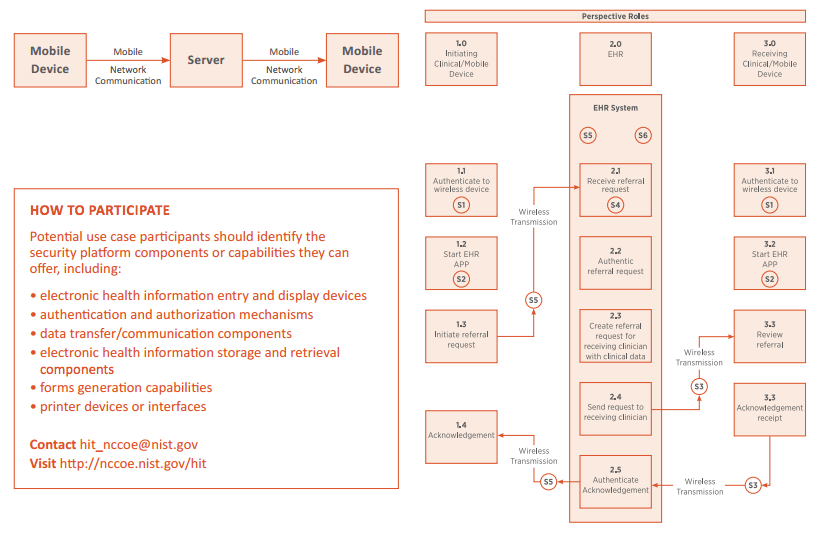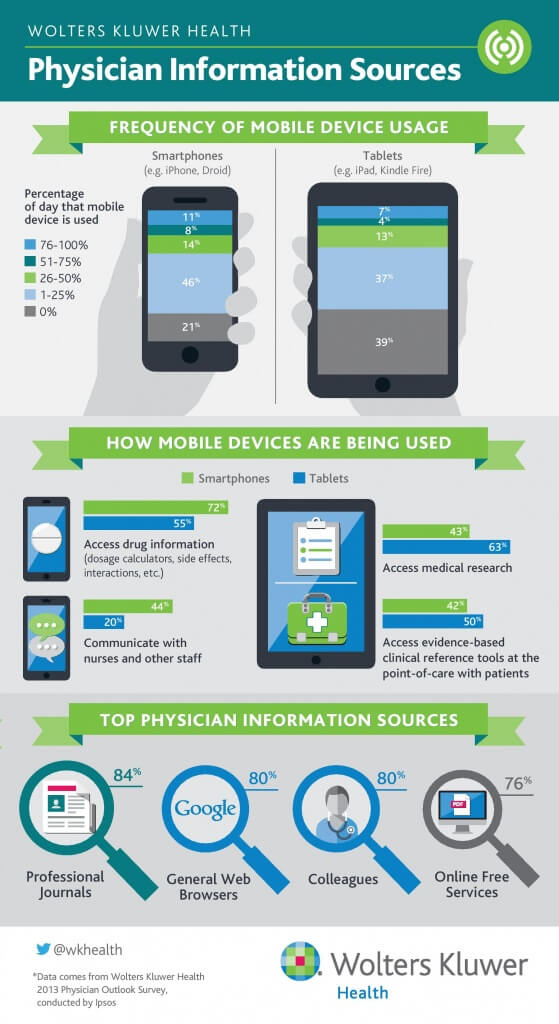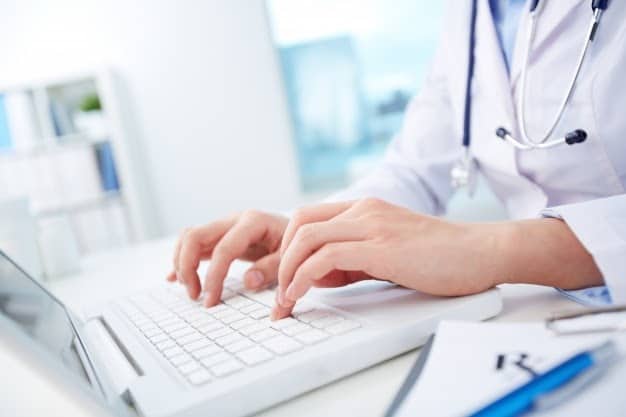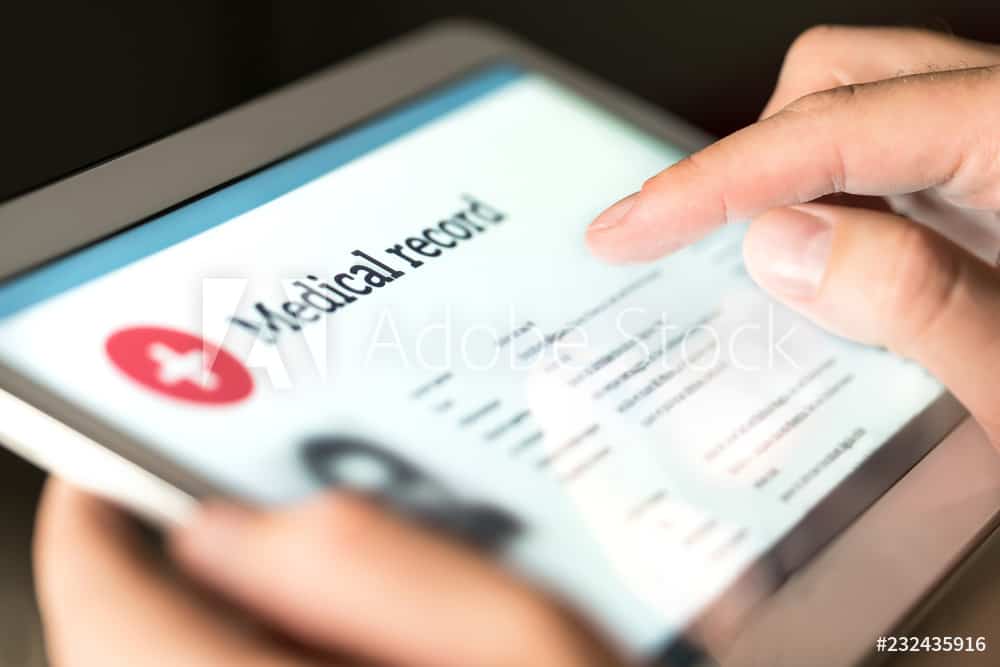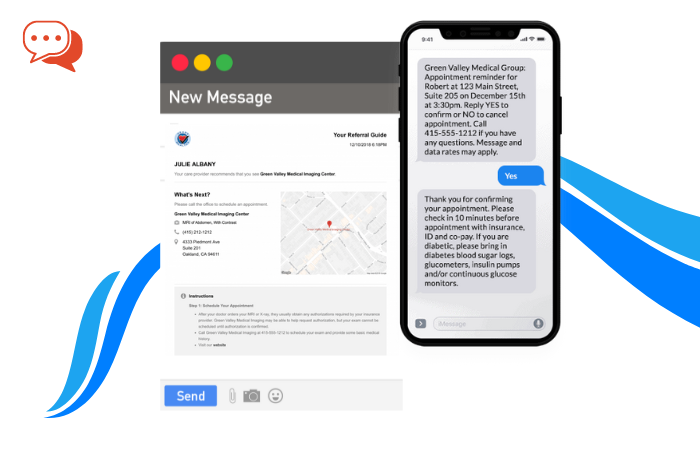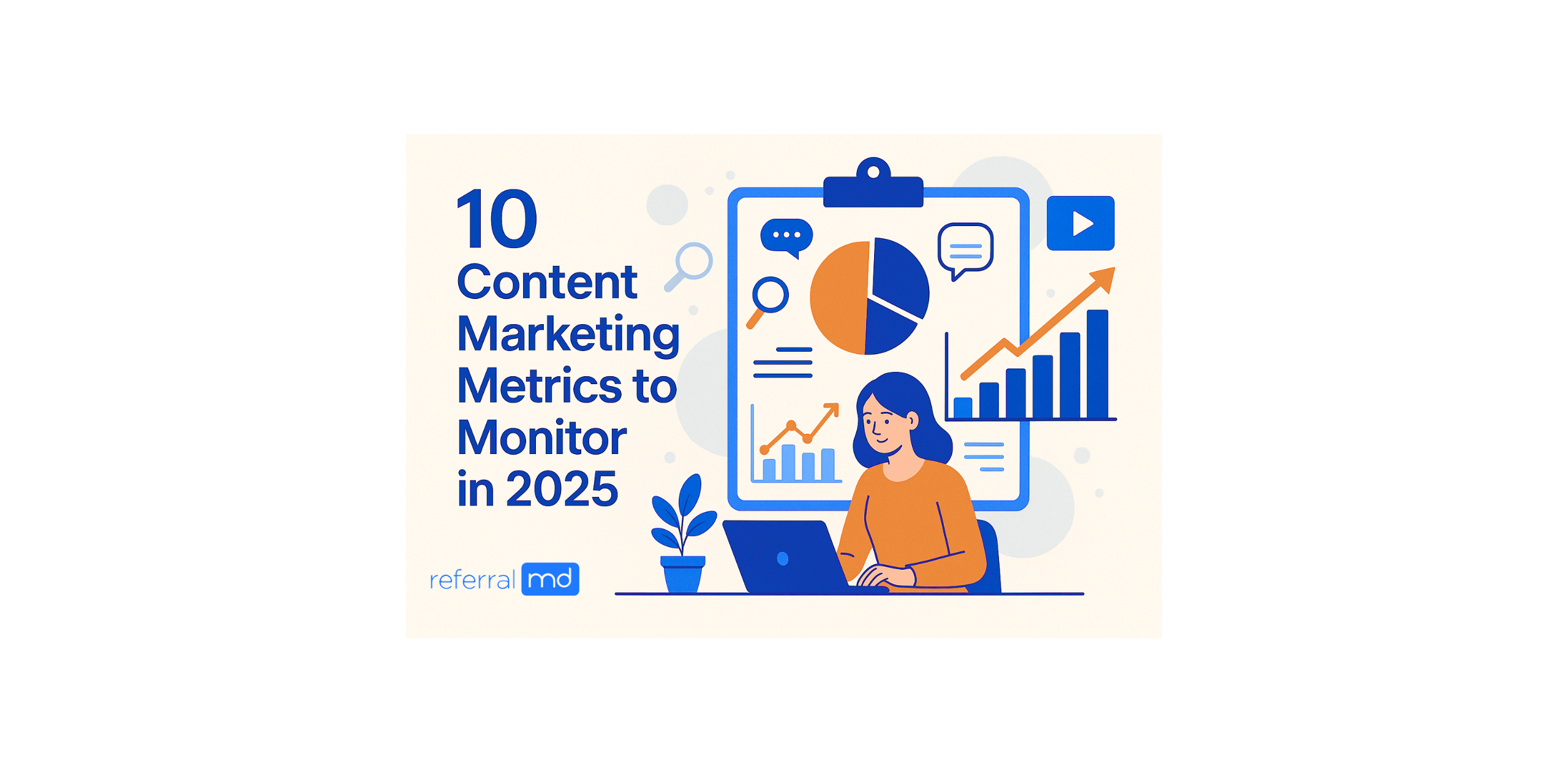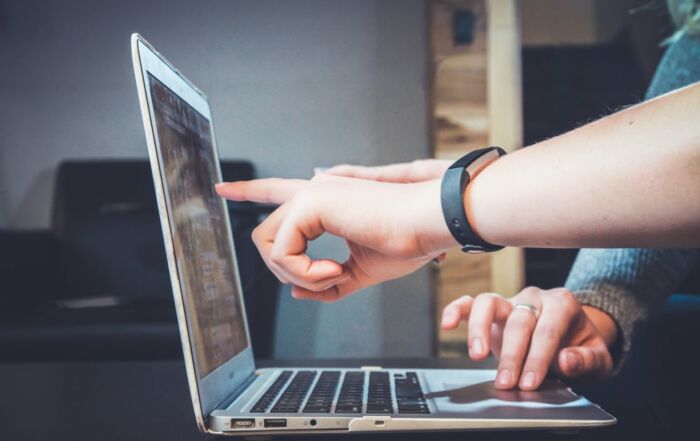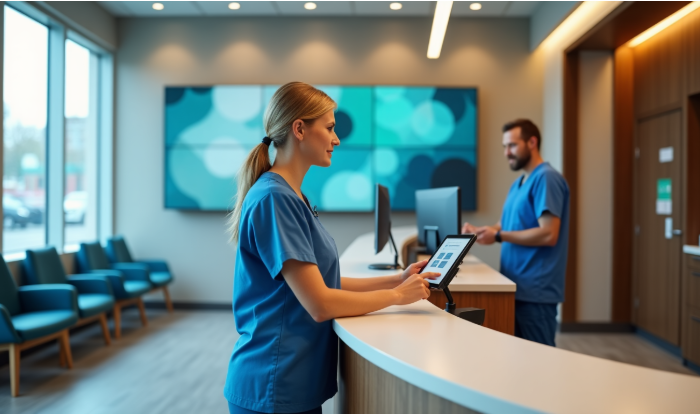Since the iPhone’s launch in 2007, mobile health technology has become a growing trend among populations all across the globe. According to an mHealth survey, 33% of people own an iPhone. This rise in smartphone ownership means that more and more people are going online to find information on a mobile device. Whether it’s information about their personal interests or the latest in healthcare news, they’re online; they’re mobile; and they’re looking.
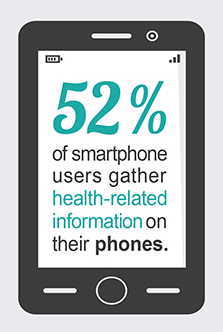 52% of smartphone users gather health-related information on their phones. That includes information about a specific medical problem or procedure, or diet, nutrition, and fitness-related information. Other popular health topics include:
52% of smartphone users gather health-related information on their phones. That includes information about a specific medical problem or procedure, or diet, nutrition, and fitness-related information. Other popular health topics include:
- prescription or over-the-counter drugs,
- alternative treatments,
- health insurance,
- depression, anxiety or stress,
- and a particular doctor or hospital.
However, searching for health information isn’t the only use of mobile devices among providers. Healthcare professionals use mobile devices for mobile health (mHealth) services as well, which is predicted to be a $26 billion market globally by 2017, according to the 2013-2017 Mobile Health Market Report by Research2Guidance.
Statistics like these make you wonder: how else is mobile health technology growing?
There’s a growing number of mobile device users
People are going mobile. There’s no doubt about that. In just the past couple of years, there has been a flood of mobile devices on the market – from tablets to wearables – that is making it easier for people to adopt their use. Even healthcare providers are turning to mobile. According to the same Research2Guidance report, 80% of physicians use smartphones and medical apps.
Although it’s been a challenge for the healthcare industry to adopt mobile devices in the past due to compliance and IT security regulations, more organizations are finding it acceptable. Since more health apps are being developed with HIPAA-compliance in mind, private practices, hospitals, and other healthcare systems alike are finding it easier to implement mobile devices across the organization. Providers and staff members now use mobile for social networking, continuing education, transferring patient records, and managing physician referral networks with applications such as referralMD.
The biggest compliance risk with mobile devices, however, is data leakage. Because there is patient information that gets stored on a mobile device, the posed risk is having that device lost or stolen, and therefore leaking that patient’s data. However, with a proper healthcare IT plan, compliance can be made possible. For example, the National Cybersecurity Center of Excellence (NCCoE) is now working with healthcare providers to ensure that documents are securely managed, and proper exchange of clinical information using electronic methods occurs. The approach that they take is first understanding the organization’s security challenges, then developing a cost-effective security platform that combines proper cyber security solutions. These solutions include developing an architecture that allows data to be exchanged and maintained as demonstrated in the diagram below in a secure way.
(Image Source: National Cybersecurity Center of Excellence)
Having the right IT framework like this one allows physicians to perform a variety of recurring activities including sending referrals, receiving lab results, and viewing patient records, even when they’re on the go. Healthcare providers also want to be able to access resources and information when it matters most, like at point-of-care, or from anywhere, at any time of the day. In fact, 91% of adults have their mobile device within arm’s reach 24/7. That’s 24 hours a day, seven days a week, which means they have their mobile devices near them even when they sleep (yes, I’m guilty of this)! This usage is not uncommon in the healthcare industry as the nature of the job often requires physicians to be accessible at all times of the day and night, like when on-call at a hospital, for example. At the same time, physicians need to have access to information sources at varying times, and mobile devices allow this.
Here are a few statistics about the information sources that physicians seek when using mobile devices according to a Wolters Kluwer Health infographic:
- 72% of physicians access drug information from smartphones.
- 63% of physicians access medical research from tablets.
- 44% of physicians communicate with nurses and other staff from smartphones.
(Infographic Source: HIT Consultant)
Seeking information on-the-go isn’t the only benefit of mobile devices, however. 50% of physicians also access evidence-based clinical tools at point-of-care. These tools allow physicians to make better-informed healthcare decisions, and provide patients with greater quality-of-care.
There’s a growing number of physicians using mobile for patient care
Smartphones have become a round-the-clock resource for quick reference, continued education, and point-of-care among physicians. According to a 2015 HIMSS Mobile Technology Survey, more than 200 healthcare provider employees found that nearly 90% of respondents are utilizing mobile devices within their organizations to engage patients in their healthcare.
Respondents from the survey also reported leveraging a variety of mobile tools including app-enabled patient portals, telehealth services, and text communications. Of these technologies, 36% of respondents believe the use of app-enabled patient portals is the most effective tool in patient engagement to date. These app-enabled patient portals allow real-time interaction between patients and providers, making engagement easier to achieve.
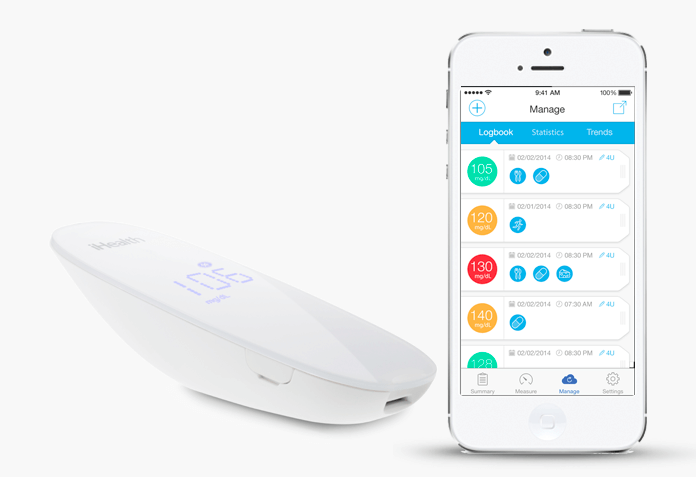 In addition to patient engagement, physicians are also able to collect long-term and specialized data of certain diseases that were previously difficult to obtain. They can also track patient health behaviors through these apps over long-term periods of time. For example, wearables like Fitbit or Jawbone’s Up24 band, which are popular mobile devices among consumers can make it easier to track exercise, nutrition, and even sleep cycles. Other devices, like iHealth’s gluco-monitoring system, lets patients record pre/post meals and medications, and share glucose readings and insulin dosages with their physician.
In addition to patient engagement, physicians are also able to collect long-term and specialized data of certain diseases that were previously difficult to obtain. They can also track patient health behaviors through these apps over long-term periods of time. For example, wearables like Fitbit or Jawbone’s Up24 band, which are popular mobile devices among consumers can make it easier to track exercise, nutrition, and even sleep cycles. Other devices, like iHealth’s gluco-monitoring system, lets patients record pre/post meals and medications, and share glucose readings and insulin dosages with their physician.
Lux Research Associate, Nick Kurkjy says in a Modern Healthcare article, “It’s great to know how many steps you’ve walked, but to be able to take your heartbeat or blood glucose levels or more elaborately, do an analysis of a EEG signal, (these) clinical settings are where the value of an mHealth device are realized.” Providers can use this data to improve care and draw health trends to “reduce recovery times, and decrease readmissions”, says Kurkjy.
Kurkjy isn’t alone in realizing the benefits of mHealth apps for improving patient care. In fact, 93% of physicians believe that mHealth apps can improve patient’s health according to a GreatCall survey on the rising popularity of mHealth apps. The same survey also reports:
- 40% of physicians believe mHealth technologies can reduce the number of visits to doctors’ offices.
- 93% of physicians find value in having a mobile health app connected to Emergency Health.
As a result of this shift in mobile health use, more mobile health apps are being developed to cater to the needs of healthcare professionals. This rapid development opens up a large market of mobile device users in all areas of medicine from otolaryngology to anesthesiology, which healthcare organizations are realizing. Everything from care collaboration platforms to mobile EHRs or EMRs is being developed, which is attracting more and more healthcare providers across the globe. In fact, the global mobile health market is expected to grow annually at a rate of 33.5% between 2015 and 2020, according to an Allied Market Research report. This growth could be the result towards pushing EHR implementation to streamline processes and communication within health organizations, or simply making health data more easily accessible.
There’s a growing number of mobile health apps and app downloads
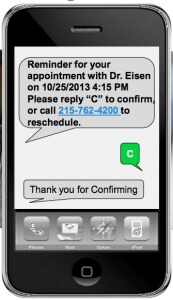 To date, 61% of people have downloaded an mHealth app. That’s an astounding number, but it comes as no surprise. There’s apps for everything these days, even within the healthcare industry. People want to know about their health, and healthcare providers want to be able to access information in moments that matter.
To date, 61% of people have downloaded an mHealth app. That’s an astounding number, but it comes as no surprise. There’s apps for everything these days, even within the healthcare industry. People want to know about their health, and healthcare providers want to be able to access information in moments that matter.
For example, Philadelphia-based Hahnemann Hospital conducted a pilot study that introduced a mobile app that supported email and text messaging to over 350 congestive heart failure patients. During this study, patients received email and text message reminders to get them to schedule follow-up appointments after being discharged from the hospital.
As a result, the hospital was able to reduce its 30-day readmissions by 10% that was a 40% improvement over their baseline. Readmissions also decreased to 16% for patients who received messages, and the readmissions rate for those who confirmed an appointment was 8.8%, compared to 15.4% for those who didn’t confirm. At the end of the 10-month pilot, it was clearly demonstrated that not only could mobile apps help patients to keep their appointments to get the proper follow-up care; it could contribute to reduced hospital costs.
Mobile health apps can be broken down into two major categories: wellness and medical. Wellness apps are typically used by patients, while medical apps are are designed to be primarily used by physicians. Of the 100,000 mobile health apps in app stores around the world, 85% of apps are for wellness while the remaining 15% are for medical. Most apps are free to use or free to get started, but there’s also a large portion of apps that are paid. Of the mHealth apps available in major app stores, 42% of them adhere to a paid business model.
The truth is it’s becoming more of the norm to track health, whether as a physician, patient, or consumer. Apps like Apple’s HealthKit and other health tracking apps make it easier to record health information within the app or integrate with other apps to get “closed-loop” reporting of health and fitness data. For example, HealthKit lets you track your heart rate, calories burned, blood sugar, and cholesterol. You can also see how many calories you consumed each day by integrating nutrition and fitness apps, like MyFitnessPal, or allow data from your blood pressure app to be shared with your physician automatically.
In 2014 alone, Research2Guidance reported that there were over four million free downloads of mHealth apps every day. That number is expected to keep growing.
By 2017, it’s predicted that 50% of smartphone users will have downloaded mobile health apps.
Conclusion
While there are still plenty of providers who aren’t using mobile health apps for patient care or engagement, data shows that they need to catch up. The truth of the matter is that healthcare providers and insurers need to “get with the times” because mobile devices truly have the potential to improve patient care and health outcomes. Surely it’ll take time for adoption of mobile devices in the healthcare industry to become mainstream; however, it’s looking like widespread adoption will happen sooner than we think. Companies are already investing into the development of mobile health devices, as it seems new patient engagement apps are launching every day across the globe.
While the United States leads the market in mHealth growth, other markets are demonstrating growth as well. Asia-Pacific, for example, is predicted to grow at a rate of more than 35% making it the fastest-growing mHealth market. In an Allied Market Research press release, the United Kingdom, France and Germany also collectively accounted for 45% share in the Europe mHealth device market in 2014.
Therefore, it’s clear to see that mobile health technologies are increasing in popularity globally, and as a result, transforming the face of healthcare. So if you’re a healthcare provider or organization that has yet to go mobile, you may want to consider these statistics and numbers, and make a change.
Have you or your organization adopted mobile health devices? Share your thoughts and comments in the box below.
